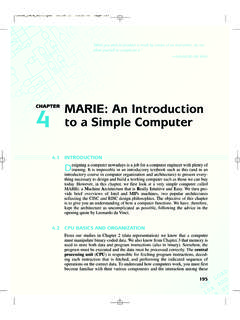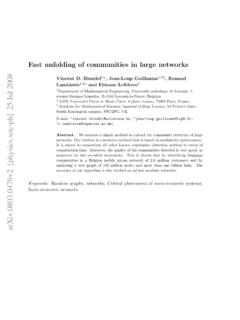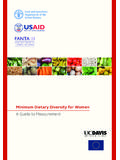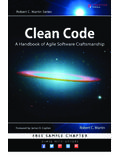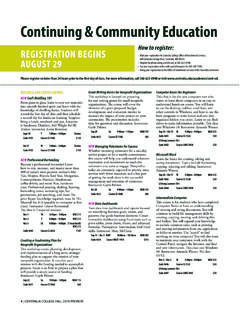Transcription of The Mechanical Mind - All things Michael Johnson …
1 The Mechanical MindHow can the human mind represent the external world? What is thought, and can it be studied scientifi cally? Does it help to think of the mind as a kind of machine?Tim Crane sets out to answer questions like these in a lively and straightforward way, presuming no prior knowledge of philosophy or related disciplines. Since its fi rst publication in 1995, The Mechanical mind has introduced thousands of people to some of the most important ideas in contemporary philosophy of mind . Tim Crane explains some fundamental ideas that cut across philosophy of mind , artifi cial intelligence and cognitive science: what the mind body problem is; what a computer is and how it works; what thoughts are and how computers and minds might have them. He examines different models of the mind from dualist to eliminativist, and questions whether there can be thought without language and whether the mind is subject to the same causal laws as natural phe-nomena.
2 The result is a fascinating exploration of the theories and arguments surrounding the notions of thought and edition has been fully revised and updated, and includes a new chapter on consciousness and new sections on modularity and evolutionary psychology. There are also guides for further reading, a chronology and a new glossary of terms such as Mentalese, con-nectionism and intentionality. The Mechanical mind is accessible to the general reader as well as students, and to anyone interested in the mechanisms of our Crane is Professor of Philosophy at University College London and Director of the Philosophy Programme of the School of Advanced Study, University of London. He is the author of Elements of mind and the editor of The Contents of how is it, and by what art, doth the soul read that such an im-age or stroke in matter.
3 Signifi es such an object? Did we learn such an Alphabet in our Embryo-state? And how comes it to pass, that we are not aware of any such congenite apprehensions? .. That by diversity of motions we should spell out fi gures, distances, magnitudes, colours, things not resembled by them, we attribute to some secret Glanvill, The Vanity of Dogmatizing (1661)THE Mechanical MINDA philosophical introduction to minds, machines and mental representationSECOND EDITIONTIM CRANEF irst published 1995by Penguin BooksSecond edition published 2003by Routledge11 New Fetter Lane, London EC4P 4 EESimultaneously published in the USA and Canadaby Routledge29 West 35th Street, New York, NY 10001 Routledge is an imprint of the Taylor & Francis Group 1995, 2003 Tim CraneAll rights reserved. No part of this book may be reprinted or reproduced or utilized in any form or by any electronic, Mechanical , or other means, now known or hereafter invented, including photocopying and recording, or in any information storage or retrieval system, without permission in writing from the Library Cataloguing in Publication DataA catalogue record for this book is available from the British LibraryLibrary of Congress Cataloging in Publication DataA catalog record for this book has been requestedISBN 0-415-29030-9 (hbk)ISBN 0-415-29031-7 (pbk)This edition published in the Taylor & Francis e-Library, 0-203-42631-2 Master e-book ISBNISBN 0-203-43982-1 (Adobe eReader Format)vContentsList of fi gures viiiPreface to the fi rst edition ixPreface to the second edition xiIntroduction.
4 The Mechanical mind 1 The Mechanical world picture 2 The mind 51 The puzzle of representation 8 The idea of representation 11 Pictures and resemblance 13 Linguistic representation 20 Mental representation 22 Thought and consciousness 26 Intentionality 30 Brentano s thesis 36 Conclusion: from representation to the mind 40 Further reading 412 Understanding thinkers and their thoughts 42 The mind body problem 43 Understanding other minds 47 The causal picture of thoughts 54 Common-sense psychology 62 The science of thought: elimination or vindication? 70 Theory versus simulation 77 Conclusion: from representation to computation 80 Further reading 81 Contentsvi3 Computers and thought 83 Asking the right questions 83 Computation, functions and algorithms 85 Turing machines 92 Coding and symbols 99 Instantiating a function and computing a function 102 Automatic algorithms 104 Thinking computers?
5 109 Artifi cial intelligence 114 Can thinking be captured by rules and representations? 118 The Chinese room 123 Conclusion: can a computer think? 128 Further reading 1294 The mechanisms of thought 130 Cognition, computation and functionalism 131 The language of thought 134 Syntax and semantics 137 The argument for the language of thought 140 The modularity of mind 148 Problems for the language of thought 154 Brainy computers 159 Conclusion: does computation explain representation? 167 Further reading 1675 Explaining mental representation 169 Reduction and defi nition 169 Conceptual and naturalistic defi nitions 172 Causal theories of mental representation 175 The problem of error 178 Mental representation and success in action 185 Mental representation and biological function 189 Evolution and the mind 194 Against reduction and defi nition 200 Conclusion: can representation be reductively explained?
6 208 Further reading 209 Contentsvii6 Consciousness and the Mechanical mind 211 The story so far 211 Consciousness, what it s like and qualia 215 Consciousness and physicalism 219 The limits of scientifi c knowledge 227 Conclusion: what do the problems of consciousness tell us about the Mechanical mind ? 230 Further reading 231 Glossary 233 The Mechanical mind : a chronology 238 Notes 242 Index Old man with a stick Flow chart for the multiplication algorithm A fl ow chart for boiling an egg A machine table for a simple Turing machine Mousetrap black box The mousetrap s innards Multiplier black box Flow chart for the multiplication algorithm again An and-gate Mach bands Diagram of a connectionist network Cummins s Tower Bridge picture of computation 204ixPreface to the fi rst editionThis book is an introduction to some of the main preoccupations of contemporary philosophy of mind .
7 There are many ways to write an introductory book. Rather than giving an even-handed description of all recent philosophical theories of the mind , I decided instead to follow through a line of thought which captures the essence of what seem to me the most interesting contemporary debates. Central to this line of thought is the problem of mental representation: how can the mind represent the world? This problem is the thread that binds the chapters together, and around this thread are woven the other main themes of the book: the nature of everyday psychological explanation, the causal nature of the mind , the mind as a computer and the reduction of mental there is a continuous line of argument, I have tried to construct the book so that (to some extent) the chapters can be read independently of each other. So Chapter 1 introduces the puz-zle of representation and discusses pictorial, linguistic and mental representation.
8 Chapter 2 is about the nature of common-sense (so-called folk ) psychology and the causal nature of thoughts. Chapter 3 addresses the question of whether computers can think, and Chapter 4 asks whether our minds are computers in any sense. The fi nal chapter discusses theories of mental representation and the brief epilogue raises some sceptical doubts about the limitations of the Mechanical view of the mind . So those who are interested in the question of whether the mind is a computer could read Chapters 3 and 4 independently of the rest of the book. And those who are more interested in the more purely philosophical problems might wish to read Chapters 1 and 2 separately. I have tried to indicate where the discussion gets more complicated, and which sections a beginner might like to skip. In general, though, Chapters 4 and 5 are heavier going than Chapters 1 to the fi rst editionxAt the end of each chapter, I have given suggestions for further reading.
9 More detailed references are given in the endnotes, which are intended only for the student who wishes to follow up the debate no-one needs to read the endnotes in order to understand the have presented most of the material in this book in lectures and seminars at University College London over the last few years, and I am very grateful to my students for their reactions. I am also grate-ful to audiences at the Universities of Bristol, Kent and Nottingham, where earlier versions of Chapters 3 and 4 were presented as lectures. I would like to thank Stefan McGrath for his invaluable editorial advice, Caroline Cox, Stephen Cox, Virginia Cox, Petr Kol r , Ondrej Majer, Michael Ratledge and Vladim r Svoboda for their helpful comments on earlier versions of some chapters, Roger Bowdler for the drawings and Ted Honderich for his generous en-couragement at an early stage.
10 I owe a special debt to my colleagues Mike Martin, Greg McCulloch, Scott Sturgeon and Jonathan Wolff for their detailed and perceptive comments on the penultimate draft of the whole book, which resulted in substantial revisions and saved me from many errors. This penultimate draft was written in Prague, while I was a guest of the Department of Logic of the Czech Academy of Sciences. My warmest thanks go the members of the Department Petr Kol r , Pavel Materna, Ondrej Majer and Vladim r Svoboda, as well as Marie Duz i for their kind College LondonNovember 1994xiPreface to the second editionThe main changes that I have made for this second edition are the replacement of the epilogue with a new chapter on conscious-ness, the addition of new sections on modularity and evolutionary psychology to Chapters 4 and 5, and the addition of the Glossary and Chronology at the end of the book.
